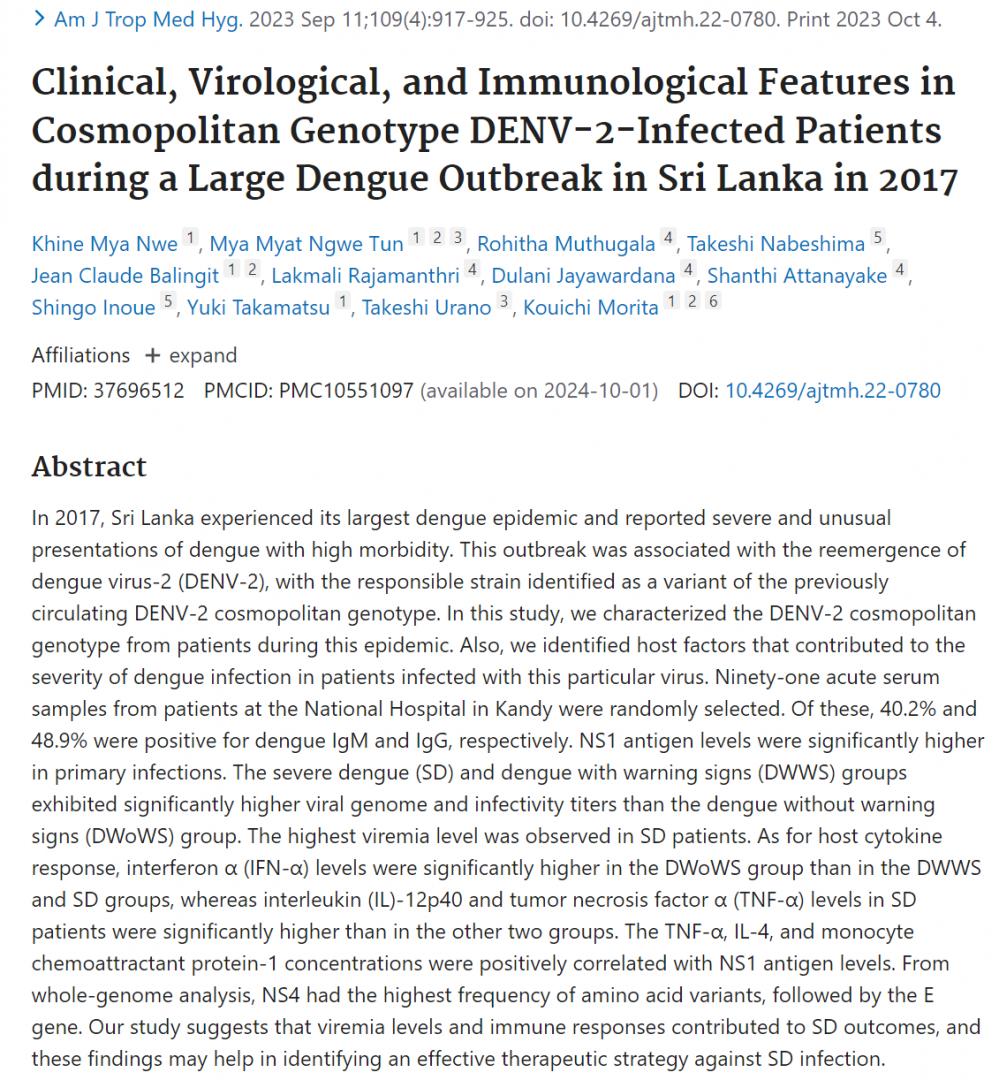

In 2017, Sri Lanka experienced its largest dengue epidemic and reported severe and unusual presentations of dengue with high morbidity. This outbreak was associated with the reemergence of dengue virus-2 (DENV-2), with the responsible strain identified as a variant of the previously circulating DENV-2 cosmopolitan genotype. In this study, we characterized the DENV-2 cosmopolitan genotype from patients during this epidemic. Also, we identified host factors that contributed to the severity of dengue infection in patients infected with this particular virus. Ninety-one acute serum samples from patients at the National Hospital in Kandy were randomly selected. Of these, 40.2% and 48.9% were positive for dengue IgM and IgG, respectively. NS1 antigen levels were significantly higher in primary infections. The severe dengue (SD) and dengue with warning signs (DWWS) groups exhibited significantly higher viral genome and infectivity titers than the dengue without warning signs (DWoWS) group. The highest viremia level was observed in SD patients. As for host cytokine response, interferon α (IFN-α) levels were significantly higher in the DWoWS group than in the DWWS and SD groups, whereas interleukin (IL)-12p40 and tumor necrosis factor α (TNF-α) levels in SD patients were significantly higher than in the other two groups. The TNF-α, IL-4, and monocyte chemoattractant protein-1 concentrations were positively correlated with NS1 antigen levels. From whole-genome analysis, NS4 had the highest frequency of amino acid variants, followed by the E gene. Our study suggests that viremia levels and immune responses contributed to SD outcomes, and these findings may help in identifying an effective therapeutic strategy against SD infection.